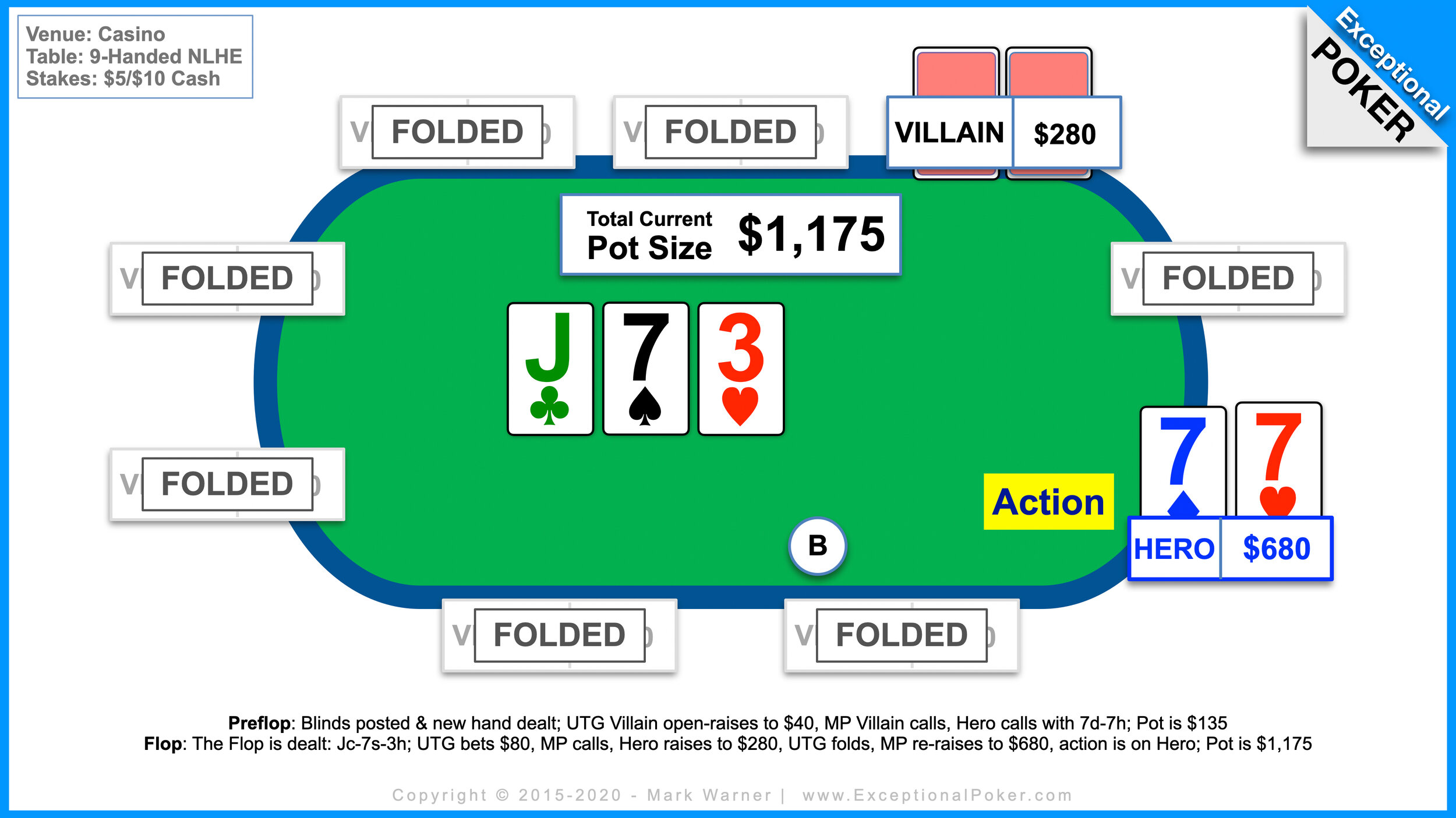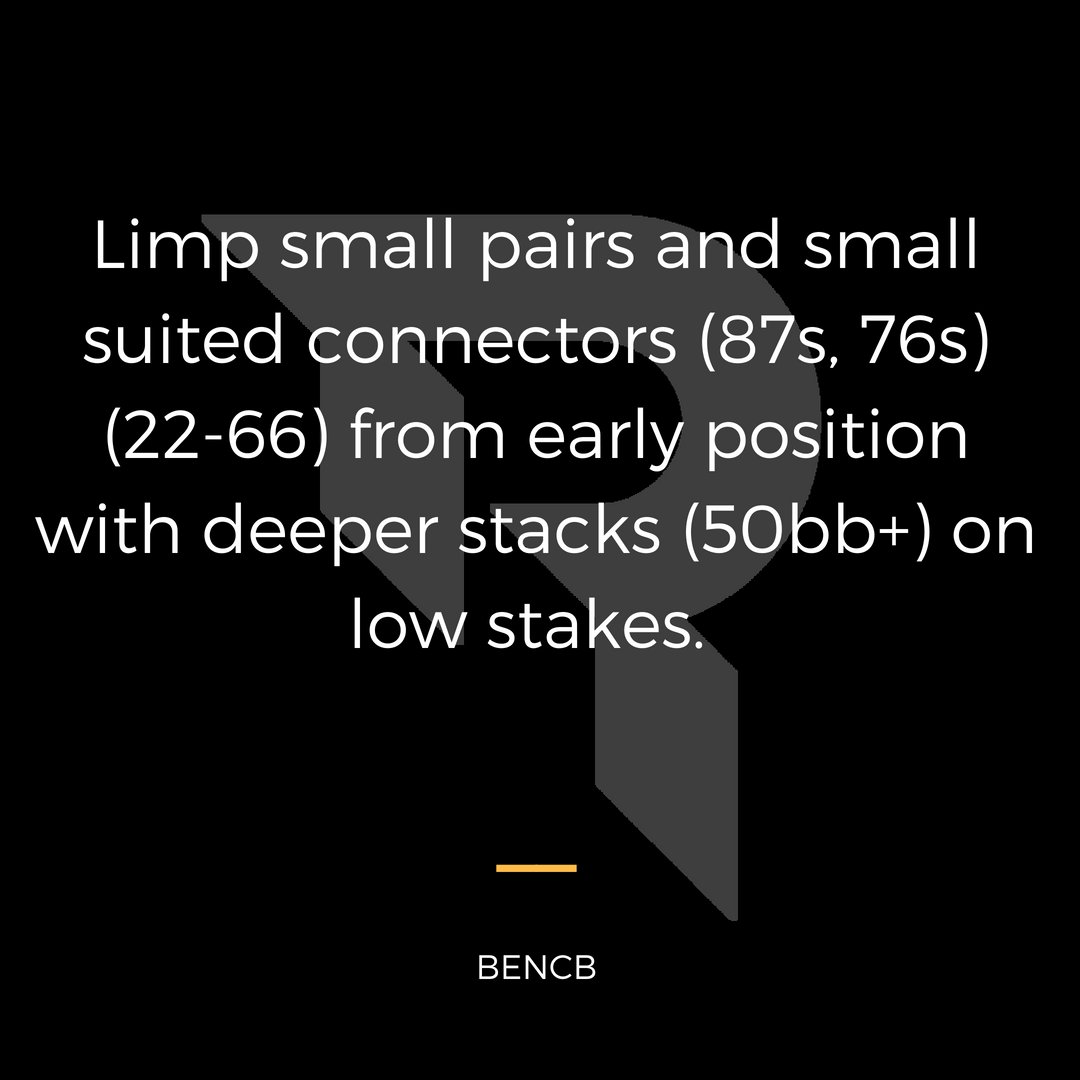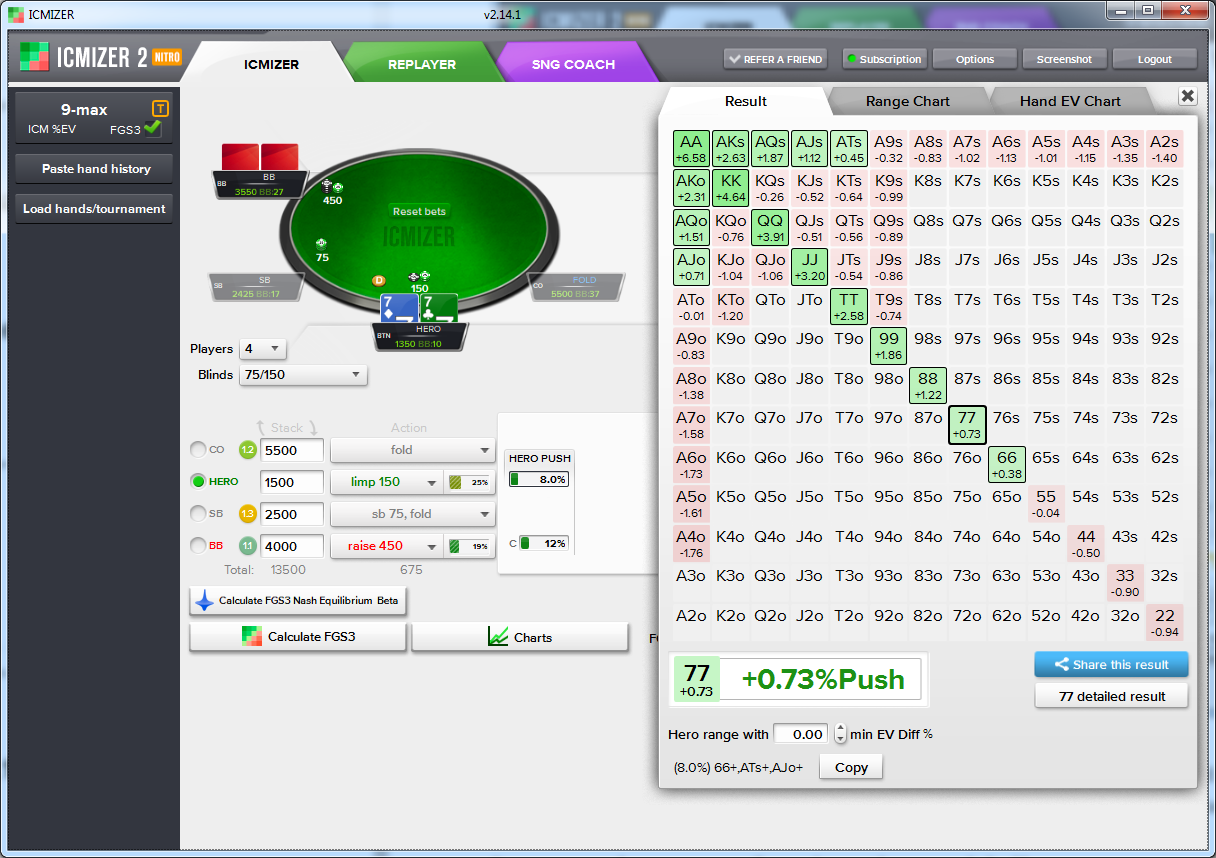Poker Limp Raise
More hands on the openshove list become limps or raise/folds. The better the hand flops, the more likely it is to be a limp. T7s, for example, is a great hand to limp 15bb deep. Some hands that were strong enough to raise/call, like K7o, aren't strong enough against most opponents anymore, and become limps or minraise/folds. In a $1/$3 no-limit hold’em cash game with $160 effective stacks, the players in first and second position at an eight-handed table limped. Our Hero decided to raise to $16 with As-Qd from the button. While I am fine with raising the limpers purely for value, Hero should make it a bit larger, perhaps $22.
To limp in poker is to bet the absolute minimum needed to stay in a hand. Limping is often used when the little blind simply calls the big blind instead of raising. It's also known as limp in, flat call, or calling the blind.
An open limp is when the first player to enter the pot preflop bets only the amount of the big blind, the minimum bet. The under the gun position is one that is most likely to open limp to see how the rest of the table will be playing their hands.
Limping is considered to be weak and passive play and is seen more among beginning poker players rather than experienced players, who prefer to open with a raise if they have a hand they wish to play.
Poker is a game of information and representation - from the information you have about betting patterns, stack sizes, equities, player types and tendencies, and ofcourse position - you will make some raises and re-raise with lesser holdings more profitable in certain situations. If you limp AA early and it hits it will be hard to get paid off post flop. KK QQ are going to re-raise even a standard raise so you can get more money in pre. You get a raise out of JJ, AK, AQ, AJ, KQ pre to get more money in pre or just take it down. In fishy poker games where players limp often & never fold, you can’t realistically expect they’ll fold if you raise it up, so you’ll likely have to see the flop multi-way anyways.
Small Blind Limp
An example of the small blind limp is being dealt 8-9 offsuit in the small blind. All of the players before you fold so only the big blind and you will be in the hand if you limp in. You place the minimum bet in hopes that the big blind will simply check and you'll be able to see a cheap flop.
By limping in from the small blind, you risk that the big blind will raise and you'll have to decide whether to match it to see the flop. However, it is a cheap investment as you've already had to bet half of the amount of the big blind if you had folded rather than limped in.
If you have a strong starting hand when in the small blind, limping would be a weak or passive move. But if the big blind raises, you have the choice of reraising and sweetening the pot. However, that also signals that you have a strong hand, perhaps A-A.
A small blind limp with a strong hand can be a tactic to use against an aggressive player in the big blind. You can anticipate that they will raise and then you have the opportunity to call them and see the flop or to re-raise.
Open Limp

An example of an open limp is that you are the player under the gun and have the first action preflop. The big blind minimum bet is $10, so you place that bet. The action then proceeds around the table and other players have the chance to call, raise, or fold. If everyone folds and the big blind checks, then there are just you two in the pot, plus the $5 from the small blind, who folded.
More often, in the above scenario, one of the other players will raise the bet. You then have the choice to fold, call, or reraise. If you aren't prepared to defend your hand and call the raise, you have wasted chips by limping in.
From any position, limping in is considered to be a beginner's move and weak or passive play. But you might use it as a tactic if you are prepared to call any raise.
Part 2 - NL Holdem Extensive Cash Ring Game Guide
Starting Hand Requirements

These requirements work very well with tight/aggressive play. For less experienced players, this is a way to get going.
Don't play marginal hands or you will have to do a lot of guessing and be vulnerable. If you are an NL novice, restrict yourself to playing pairs AA-22, AK, and AQ. With these hands, you won't be caught in many difficult situations and you can still win big. Playing only these hands requires discipline because you will fold most handsbut this strategy will provide you with time to study the game and watch the other players.
These are minimum required hands per position in a semi-tight/semi-aggressive game:
Minimum required starting hand when facing un-raised pot
# Players left to act Non-pair Pairs
9 (under the gun) AK 99
8 AQ 88
7 AQ 77
6 AJs 66
5 ATs 55
4 A9s, KQs 44
3 (cut off) Axs, KJs 33
2 (button) Axs, KTs, QJs, JTs 22
1 (SB) Axs, K9s, QTs, J9s 22
0 (BB)
How to modify the table depending on the action before you:
• If there are a limpers before you, only raise with the top hands, such as AK and AA-JJ, and be inclined to call with the marginal hands because these hands will do well in multi-way pots.
• In a raised pot, consider who raised and only then decide whether to call, re-raise or fold. If it was a b player, re-raise/fold. If it was a weak player, call because you will have a good chance of winning a big pot when you hit. Re-raise b players with AK and AA-JJ to shut them out and win the pot, otherwise fold. Jst call raises from weaker players with all pairs, AK and AQ, but only if you have position and will likely end up heads-up, otherwise re-raise so you can trap them on the flop when you hit a great hand instead of running them out pre-flop.
Limp or Raise:
• Raise with AA-QQ, AK and AQs from any position.
• Basically, all other starting hands are limping hands. Even though you might re-raise with them when you are defending your blinds, you might also raise with these hands when you are first in from last position.
• Mix up your play sometimes by raising/calling/re-raising with hands you would not normally play. This prevents predictability.
General pre-Flop Advice
• The majority of the time, raise/re-raise with top-pairs (AA-QQ) and top connectors (AK, AQs) to make those with low pairs and various connectors pay to see flops against you. They will often have the opportunity to double up on you if they hit. Many beginners do not realize this and fold too often before the flop.
• Stick to premium hands. You will pay dearly to 'chase' with second-best hands when playing No Limit.
• Keep most raises down to 70% to 100% (3 times the big blind is typically equals an 80% pot bet) to save money for the times when you get re-raised or called by b holdings. If there are limpers in front of you, raise to about 4-6 times the big blind.
• Have respect for b, tight players (you should drop AQ if a b player raises under the gun).
• When very weak players have entered the pot, call and take flops with them.
Flop Play
Flop play is very important in No Limit Texas Hold'em. The key is to find the relative strength of your hand. Over time, it is important to develop the ability to release good hands when you think they are second best. Determine your relative strength and release hands that face a real risk of being second-best. Betting is the natural move when you want to protect a good hand from being outdrawn or when you are presented with the chance to make your opponents fold. The flop is the time to 'pump it or dump it'.
It is extremely important that you always evaluate the relative strength of your hand on the flop.
In order to decide the correct action, keep these factors in mind:
1. What did you flop and what is your relative strength?
2. Who, if anyone, raised before the flop? What kind of player are they?
3. What position do you have relative to the player who raised?
4. Number of players (it is hard to bluff 3 or more opponents and there is a big chance of someone hitting a b hand)?
5. Your stack size and the opponents' stack size
When facing a bet, fold unless you have good reason to doubt the other player has b cards. Because that player is 'setting the odds', it is important to make the right choice. Remember, your opponent can be holding anything from the stone cold nuts down to rags - if your hand is decent it may very well be an underdog to many possible hands.
You will not always fold. In fact, sometimes answer with a raise when you have a good chance of grabbing the lead or if you think the opponent is weak. Then, YOU will be 'setting the odds' and forcing the other player to make a decision, and potentially, the mistake.
Save your calls unless you have very good reason not to such as like slow-playing a monster or drawing to the nuts in a multi-way pot. You will seldom get the odds for chasing 'outs' by calling, unless your opponent's bet too small or they give away free cards. By calling with mediocre cards, you become set up for a 'guessing game' where you have to read opponents well and 'make moves' to win.
Poker Limp Raise Back
Typical Flop Situations
Here are four typical situations on the flop:
Very b Hand (top two-pair, set)
• Often slow-play if the board is uncoordinated so you lure opponents in, induce bluffs or let them make second-best hands.
• If the board is coordinated and several are in, over-bet the pot so they have to pay for trying to outdraw you. The bigger the bet they call, the bigger their mistake. This is how you make money in poker: let other players pay for chasing you.
b Hand (over-pair, top-pair with A kicker, etc.)
• Bet about the size of the pot in order to protect it (for example, pushing out overcards and making draws pay).

• You may have to release this hand when facing an over-bet or raise because someone may well have a bigger overpair, a set, or connectors that hit the flop for a two-pair. You should not back any top-pair with your whole stack!
• If you bet and get called in several spots you have to decide whether your hand is the best because it is unlikely that all of the other players are drawing.
Medium Hand (top-pair with a weak kicker, middle-pair with A kicker, second pocket- pair, etc.)
• Most of the time, avoid betting this hand when in early position, facing several opponents, or against tricky players who slow-play frequently. Try to get a free card to hit one of your pocket cards on the turn or call/raise an opponent who bets from last position.
• If you are in late position and it is checked to you, bet.
• If you are facing a bet or raise, fold. You have no initiative and are probably chasing few outs.
Strategy Article 1. No Limit Starting Hands
Strategy Article 2. N/L Texas Holdem Basic Strategies and Tips
Poker Limp Raise Meaning
Strategy Article 3. NL Holdem Short Handed Sets
Poker Limp Raise Money
Strategy Article 4. No Limit Holdem Learn Opponents Betting Patterns NL